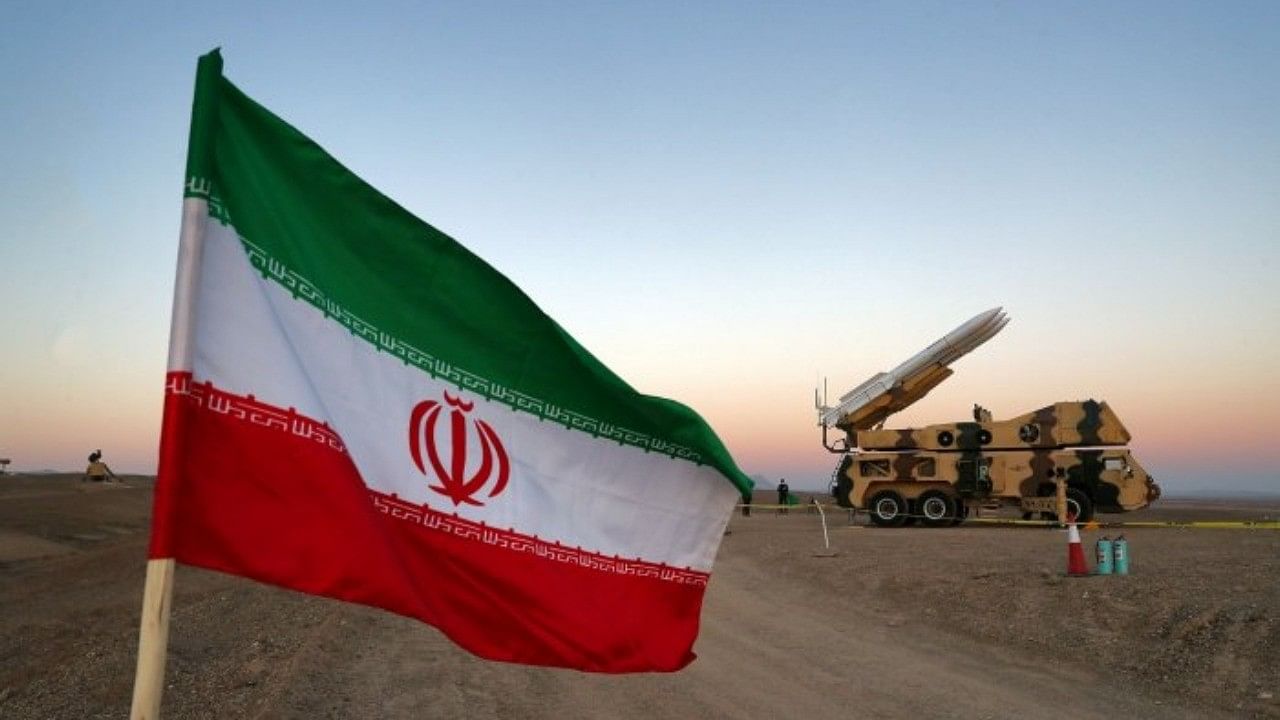
Iran flag.
Credit: Reuters file photo
On October 18 last year, Jaafar al-Hussein, a spokesperson for the Hezbollah Brigades, declared on the Telegram platform, “The Americans are essential partners in killing the residents of Gaza, and therefore they must bear the consequences.” This statement only captures microcosmically the intention of Shiite militias in Iraq and Syria to launch attacks against American bases in the region using drones, rockets, and missiles. In November, the US Central Command killed three ‘Iranian-backed proxies’ who had launched a ballistic missile at the al-Asad air base in western Iraq. This was the first instance when a ballistic missile was launched at a US position since the Israel-Hamas war began. US forces in Iraq and Syria have been attacked by Iran-backed proxies over 150 times since President Biden took office, amounting to over 60 rockets and drones since October 17 last year.
For the US, one of the most potent offshoots of the ongoing Israel-Hamas war in the Middle East has been the Shi’ite militias rearing their heads and working in tandem, even in open defiance. Israel’s determination to dismantle Hamas’ rule in Gaza has been met with threats from the “Axis of Resistance,” which not only targets Israel but also poses risks to US forces in the region. Increasing coordination between Shi’ite groups across the region may be pointing to renewed security threats for the US presence in the region, but more immediately for its staunchest ally, Israel.
The Shia militias in Iraq and Syria have been challenging Israel’s national security by launching rockets into its territory. They claim to have successfully targeted the Golan Heights in early 2024 and Eilat at the end of 2023. Notwithstanding these attacks, Israel has effectively intercepted several rockets using advanced defence systems like the Iron Dome. Additionally, Israel remains vigilant against potential infiltration attempts by members of the Shiite militias from Syria and Jordan, despite warnings from the Jordanian army against such actions.
Since July 2010, Israel has been confronted with a multi-front war targeting the “Axis of Resistance,” a coalition comprising pro-Iranian extremist groups such as Hamas and the Islamic Jihad in Gaza and the West Bank, Shia militias in Syria and Iraq, including Kataib Hezbollah, the Houthis in Yemen, and Hezbollah in Lebanon. The escalating threat to Israel’s security and the potential for a full-scale war in the Middle East prompted the US to provide substantial aid and military support to Israel, including the provision of offensive naval forces in the Mediterranean Sea.
The diplomatic and military support extended by the US significantly bolsters Israel’s deterrent capabilities and enables it to continue its military operations in Gaza. This support serves as a crucial factor in maintaining Israel’s security and provides the country with the necessary space to navigate its ongoing military activities. The ongoing war between Israel and Hamas has made the landscape in the Middle East extremely dynamic and necessitates constant monitoring of the security challenges posed to Israel and the broader region by the “Axis of Resistance,” while US support remains instrumental in countering these threats and maintaining stability in the region.
The Israel-Hamas war has put the final nail in the coffin containing the US-Iran JCPOA deal. As the US has officially entered its presidential election cycle, any mollycoddling or concession could prove electorally consequential for the Biden administration. As such, only competing interests between Iran and the US remain in the region. With its latest missile strike inside Pakistan, Iran may be showcasing its capabilities as much as it is testing the limits of Sunni solidarity with the West spread in various forms across the region. The persistent backing of Shia militia groups in the region by Iran reflects its aspiration to drive US military forces out of the Middle East and foster a division between the US and Arab nations at a broader level, derailing any strategic connectivity partnerships.
The US today is on the horns of a dilemma in the Middle East. On the one hand, it has felt the compulsion to sustain a bolstered military presence in the region to reassure and defend Israel against a coordinated regional attack involving Arab nations. On the other hand, it is getting sucked into a broader regional deterrence game in the region. Even in the absence of any state-led Arab coordination against Israel, the US faces unprecedented coordination between non-state actors spread across the region in Iraq, Syria, Yemen, and Lebanon, with an overarching Iranian influence and support for these groups. With the Yemeni Houthis dragging this dynamic into the maritime domain and the US opening a multi-nation naval coalition front against them, it appears that the US’ original intention to stop the war from spreading through the region by deploying strongly may not be working according to plan. But that is exactly how wars unfold, drawing unplanned responses from even the mightiest.
(Mishra is Fellow, Americas, ORF, New Delhi & Barak is Barak Lecturer, Lauder School of Government, Diplomacy & Strategy & Senior Researcher, The International Institute for Counter Terrorism (ICT) Reichman University (IDC), Israel)